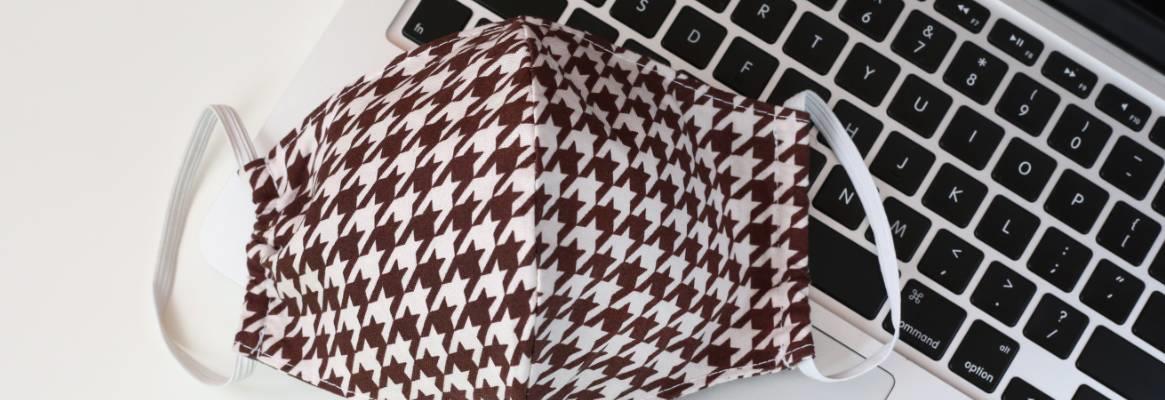The textile industry is one of the most important industries as it provides clothing--one of the basic needs of human life.
The textile industry has had many ground breaking innovations in the past and many others are underway. Consumer demand for functional textile has risen and more so after the onset of the pandemic.
UV protection, soil-repellence, wrinkle resistance, flame retardancy, water-repellence, antimicrobial, and antiviral finishes are some of the high-performance finishes applied to textiles. Among these finishes, antimicrobial and antiviral are considered the most useful due to the protection they provide against diseases and infections
How microorganisms grow on textile materials
Microorganisms grow on the surface of fabrics when they get favourable conditions such as humidity, heat and nutrition. They then react with human perspiration, changes it into foul-smelling elements like amines, aldehydes and carboxylic, causes infections, develops stains, and eventually damage the performance of the fabric. In some cases, they may also lead to allergic reactions.
Natural fibres retain water easily. Thus, they are most likely attacked by microbes as microbial enzymes hydrolyse their polymer linkages. Compared to natural fibres, synthetic fibres do not retain water easily and so microbial growth in them is slower when compared to natural fibres. Athleisure, activewear, inner garments, military and upholstery fabrics are most affected by microorganisms.
Antimicrobial Finish
Antimicrobial is an agent that slows down the effect of microorganisms or kills them. These finishes are applied to the textile so that they can resist harmful pathogens, fungi or any other bacteria by killing them or preventing their growth. It also optimises the metabolism rate of microorganisms which decreases odour, unexpected staining, colour fade and increases fabric durability. Thus, there is worldwide demand for antimicrobial finishes in fabrics especially for activewear, inner garments, and medical textiles.
There are two classifications of antimicrobial finishes depending on their effect on the textile:
1. Biostatic finish - This type of antimicrobial finish restrains or inhibits the growth of the microorganisms without killing them. Textile made with biostatic finish are called biostatic textiles.
2. Biocidal finish - This type of antimicrobial finish destroys or kills the microorganisms, and textiles with biocidal finishes are known as biocidal textile.
Antimicrobial Agents
Depending on the type of microorganism, antimicrobial agents act on microbes in different ways like disruption of cell membrane or coagulation of protein --alteration in the structure of protein molecules of microbes by heat, acid, enzymes or mechanical actions. Another way is restraining enzymes which are responsible for the metabolism of the cell. Yet another way is by elimination of free sulfhydryl groups which are crucial for the functioning of enzymes.
Methods of Antimicrobial finishing
The method of application of antimicrobial finish mainly depends on the final use of the fabric. The antimicrobial agent can be combined with dyes or it can be directly added while spinning. It can also be applied to the substrate by coating, exhaustion, padding, foaming or spraying. The additive can also be used in combination with other auxiliaries like resins, softeners, or fluorocarbons.
According to the functional behaviour--an antimicrobial agent is classified into leaching and non-leaching type. In the leaching type, any microbe which comes in contact with the antimicrobial gets destroyed. But these finishes leach or move from the surface on which they are applied. This type shows poor durability and cause health problems. On the other hand, the non-leaching type antimicrobials being bound to the garment do not migrate off but destroy the bacteria coming in contact with the garment. The microbes do not consume the chemical, instead, the chemical acts on the cell membrane of the microbes. Hence the finishing will be permanent and will remain effective for substantial length of time.
Active Ingredients
The active ingredients for antibacterial fabric are:
1. Zinc pyrithione (it has bacteriostatic properties.)
2. Silver (it has antibacterial property and has lower toxicity level for human cells)
3. Silane quats (also known as silane quaternary ammonia compounds, is a good antimicrobial)
The active ingredients for antifungal fabric are:
1. Isothiazolinone and thiabendazole (it has strong antifungal properties.)
2. Zino pyrithione(it has fungistatic properties)
Basic requirements of antimicrobial finish
Majorly, an antimicrobial finish should be efficient against microbes. But to obtain maximum benefits, it should fulfil following requirements:
1. It should not cause harmful effects on skin or on the area of application
2. Should be durable during dry cleaning or laundering
3. The fabric quality should not be affected by chemicals.
4. It should not be hazardous for the environment.
5. It should not affect the health of the manufacturer or user.
Nanocoating is another method which is a more effective antimicrobial finish than the technologies discussed earlier. In nanotextiles, nanoparticles are coated with the layer of antimicrobials. They act on pathogens on several level at the same time and are self-cleaning, antimicrobial (antifungal, antibacterial) as well as antiviral. It is said that nano coatings are 99.998 per cent effective against microbes and viruses.
Bibliography
Burnett-Boothroyd, S. C., & McCarthy, B. J. (2011). Antimicrobial treatments of textiles for hygiene and infection control applications: an industrial perspective. In Textiles for Hygiene and Infection Control (pp. 196–209). Elsevier.
Gettings, R. L., & Triplett, B. L. (1978). A new durable antimicrobial finish for textiles. In Book of papers (pp. 259–261).
(August 2, 2020). Global antimicrobial textile market insights, size, share, trends, opportunity & including covid-19 impact forecast. Bulletin Line market research reports.
Gupta, D. (2005). Antimicrobial finishing of textiles. Resil Silicones and Finishes, www. resil. com.
Mucha, H., Hofer, D., Assfalg, S., & Swerev, M. (2002). Antimicrobial finishes and modifications. Melli and textilberichte international textile reports, 83, 238–243.
Research and Markets. (May 18, 2020 06:33 ET). Demand for Antimicrobial and Anti-Viral Nanocoatings Post COVID-19 Pandemic.










Comments